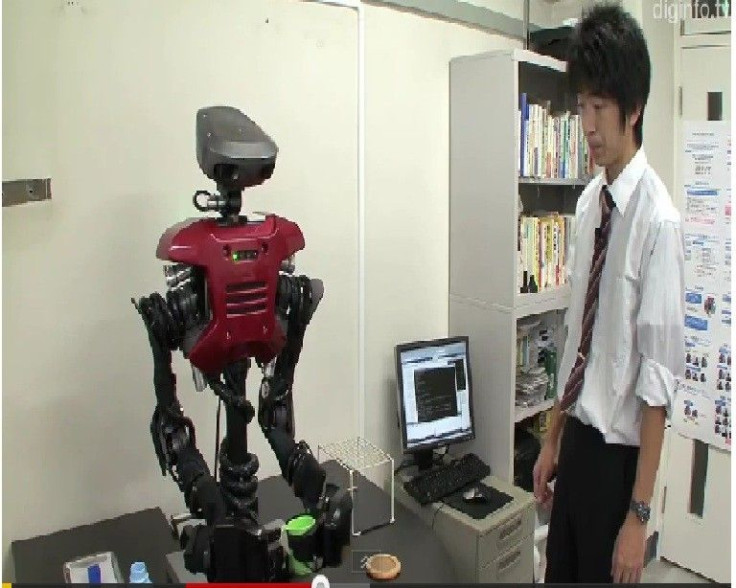Miracle Robot Can Adapt to Changing Situations (VIDEO)

Robots that can think, act on their own and adapt to a changing situation are rapidly becoming a reality.
Looks like someone needs to call John Connor.
Researchers, led by associate professor Osamu Hasegawa, at the Tokyo Institute of Technology have developed a robot that can adapt to changing situations. The robot operates on an algorithm called a self-organizing incremental neural network (SOINN).This algorithm allows the robots to perform a task it has to learn on the fly.
In the video below, the robot originally pours a fake glass of water into a cup. It does this successfully, pouring pellets (which are acting as water) into the cup with no problem.
Then it is tasked with making the water cold, a change-up from its original job. With both hands occupied, the robot realizes it has to put down the canteen of "water." He does so and then picks up a cube of ice and places it in the cup of water.
This robot is able to connect to the internet and figure out how to do something it does not know. It can also connect to other robots in the world. For instance, Hasegawa cites an example of the robot connecting with a robot in the U.K. and learning how to make English style tea for an elderly person in a nursing home.
Hasegawa says this robot represents a significant change from other bots because it can learn on the fly. He says most robots are designed a specific task. If something changes on the fly, as it often does in real life, this robot is not able to adapt. SOINN, he says, is able to alter that.
Follow Gabriel Perna on Twitter at @GabrielSPerna
© Copyright IBTimes 2025. All rights reserved.





















